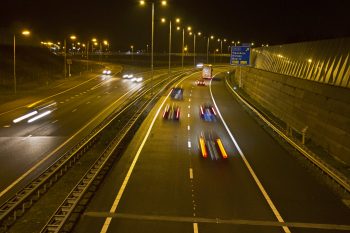Car Parts and Other Car Jargon in Dutch Posted by Karoly Molina on May 15, 2019 in Dutch Vocabulary
Just when I think I have a good grasp of Dutch, a new situation comes to show me that there is still more to learn. I recently took my car for the bi-annual change of winter and summer tires and was faced with new vocabulary. Below is a list of some useful words and phrases related to car maintenance.
Banden en Velgen
In the Netherlands, you are not obliged to have winterbanden or winter tires during the winter months, however, it is very much suggested given that these tires help with traction or tractie in temperatures below 6 degrees Celsius (43 degrees Farenheit). I recently purchased an extra set of velgen or rims to reduce the cost of changing the tires each time.
Having two sets of tires requires storage space either in your garage or opbergruimte (storage room). For those who don’t have storage space or couldn’t be bothered to remember to put the banden in the car when getting tires changed (yes, I have forgotten the tires more than once), many car garages offer storage space for your tires. The catch is, of course, that you have to pay them for the storage and always use them for the tire change. Bandenopslag costs between €50 and €60 per season.
Autobeurt
An autobeurt is the service done to your car. Beurt literally means a turn or a move; I like to see it as the car’s turn for service. Another common word used is onderhoud which means maintenance. You usually have two options, grote beurs or kleine beurs, and these vary from one car maker to another. A kleine beurt usually includes vervangen motorolie en filter (change motor oil and filter), bijvullen ruitensproeier- en koelvloeistof (top off washer and cooling liquid), inspectie banden en remen (check tires and brakes), controle ruiten en ruitenwissers (check windshields and wipers), controle accu en verlichting (check battery and lights), among other things. The approximate cost of this is €100.
A grote beurt includes the above mentioned plus some others including inspectie remystem (inspect breaking system) and vervangen bougies (replace spark plugs). The approximate cost of this is €230.
APK
In Europe, cars get checked every year to make sure everything is running smoothly and that there are no safety issues. This is very similar to what I used to get done in my car in Texas. In the Netherlands, this is called APK or Algemene Periodieke Keuring. The APK is a check for veiligheids- en milieueisen or safety and environmental requirements. This happens after the fourth year of the car, then another check two years later, and then every year. For diesel autos, this happens after the third year and then every year after that.
When it is time for the APK, you receive a letter in the mail letting you know its time. You can have this done two months before the due date at many car service centers. There are several checks done. Below is a list I found on the ANWB website.
- de verkeersveiligheid (remmen, wielophanging, schokdempers, banden, stuurinrichting, verlichting en carrosserie)
- het milieu (uitstoot van uitlaatgassen)
- de registratie (de kilometerstand, het voertuigbewijs, identificatienummer en de gebruikte brandstof)
The following video explains what happens in the APK. You can hear the pronunciation of most of the words I’ve mentioned.
In this post, I covered some of the most basic vocabulary related to car maintenance. For those who know more about cars than I do, this might not be enough and I encourage you to check the ANWB website for more vocabulary and reading material.

Build vocabulary, practice pronunciation, and more with Transparent Language Online. Available anytime, anywhere, on any device.





Comments:
Gre:
I’m enjoying your blog.